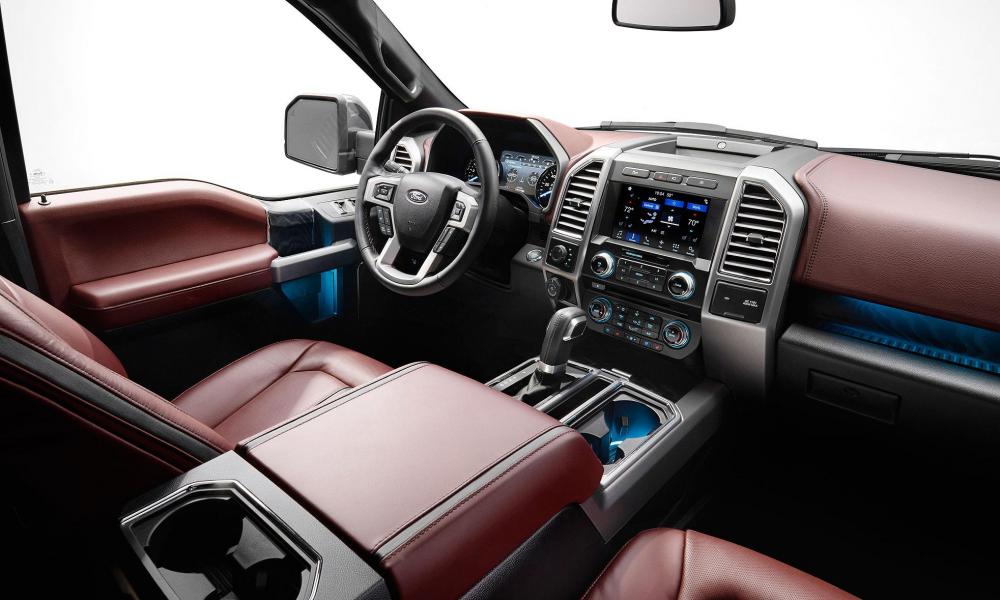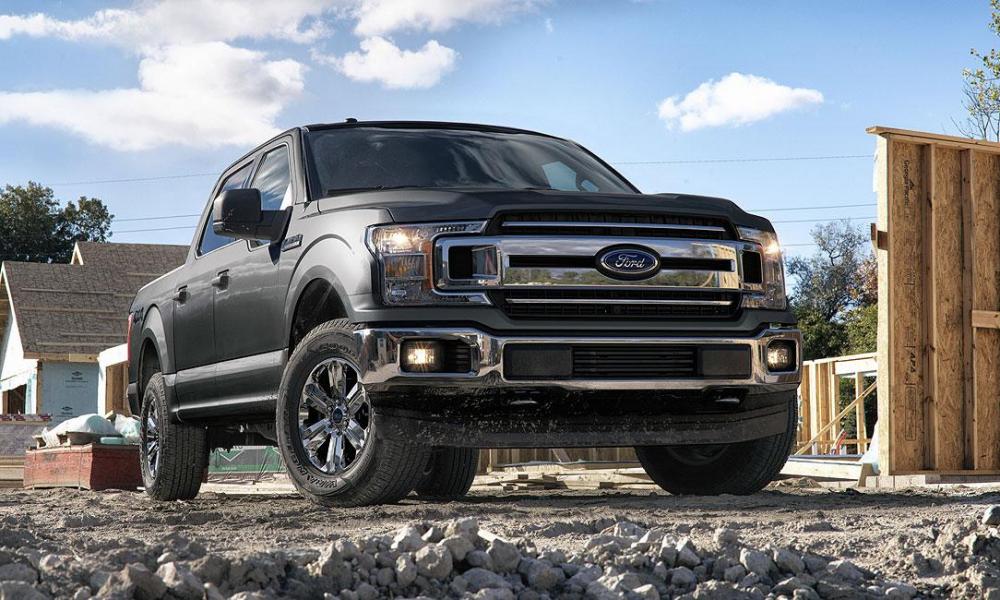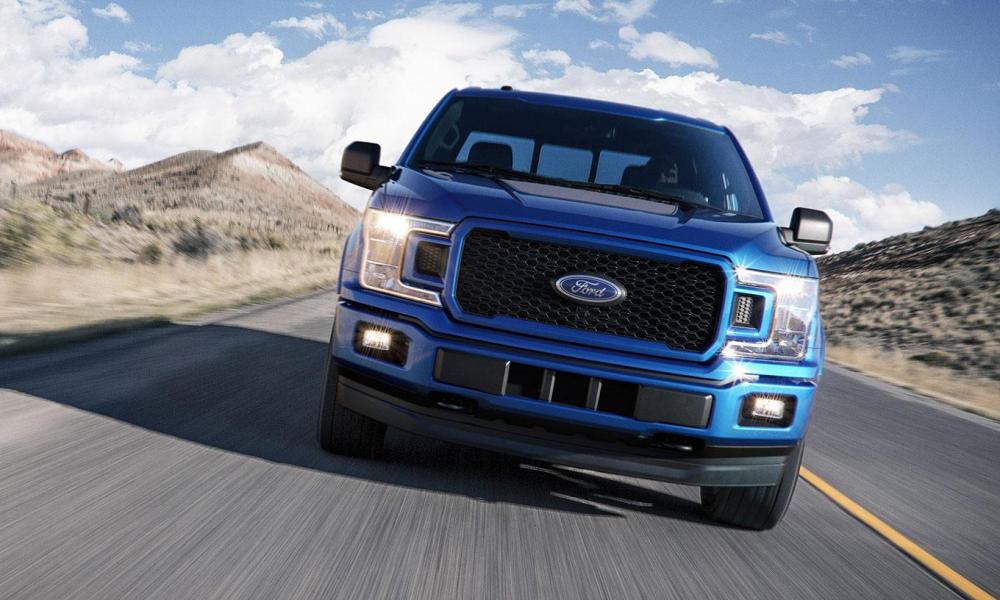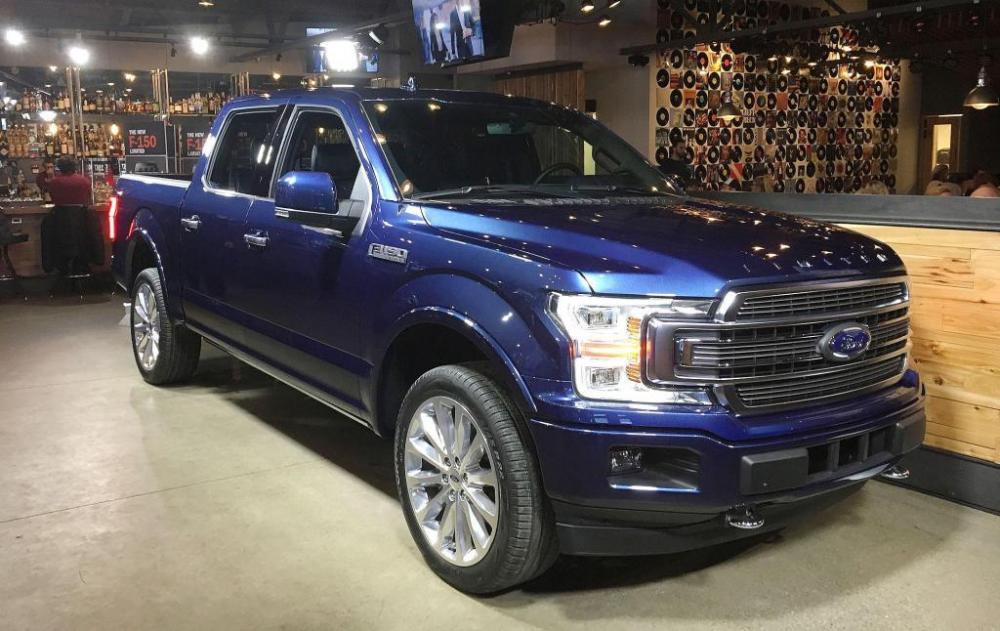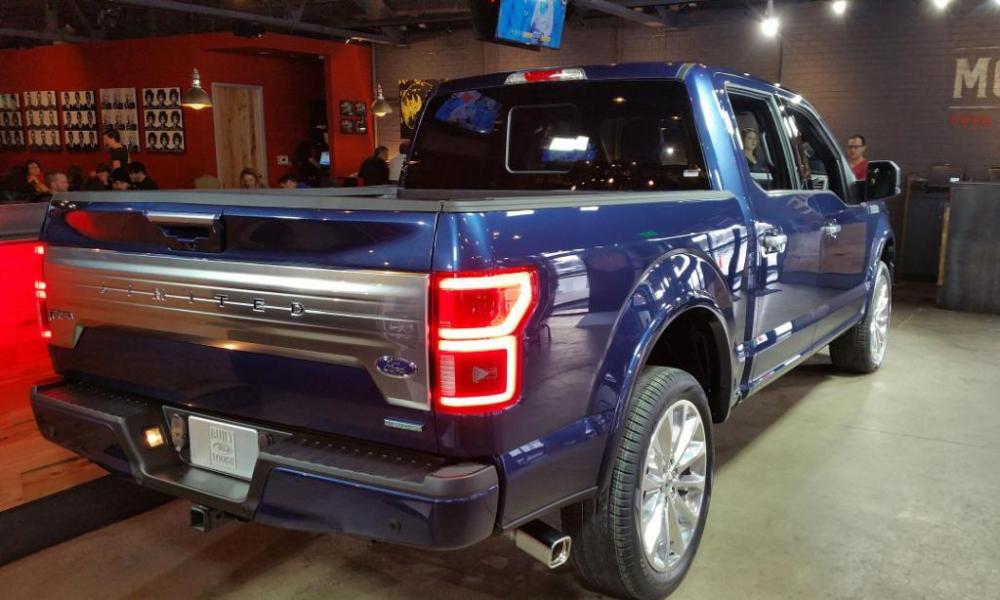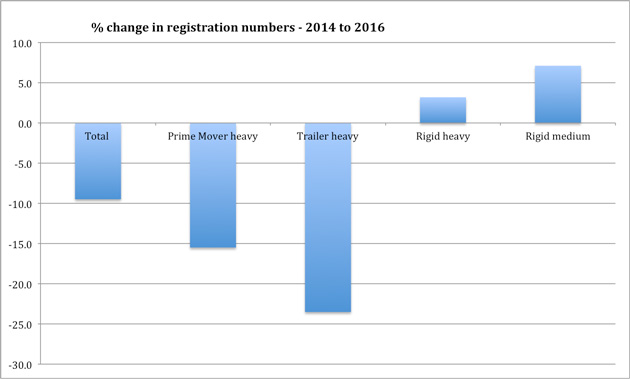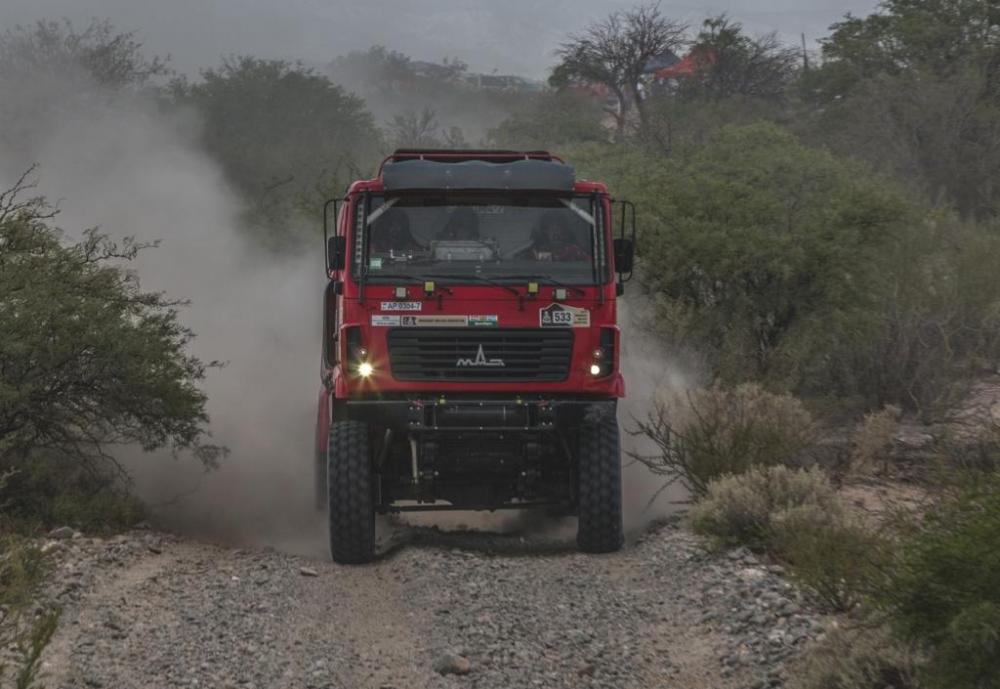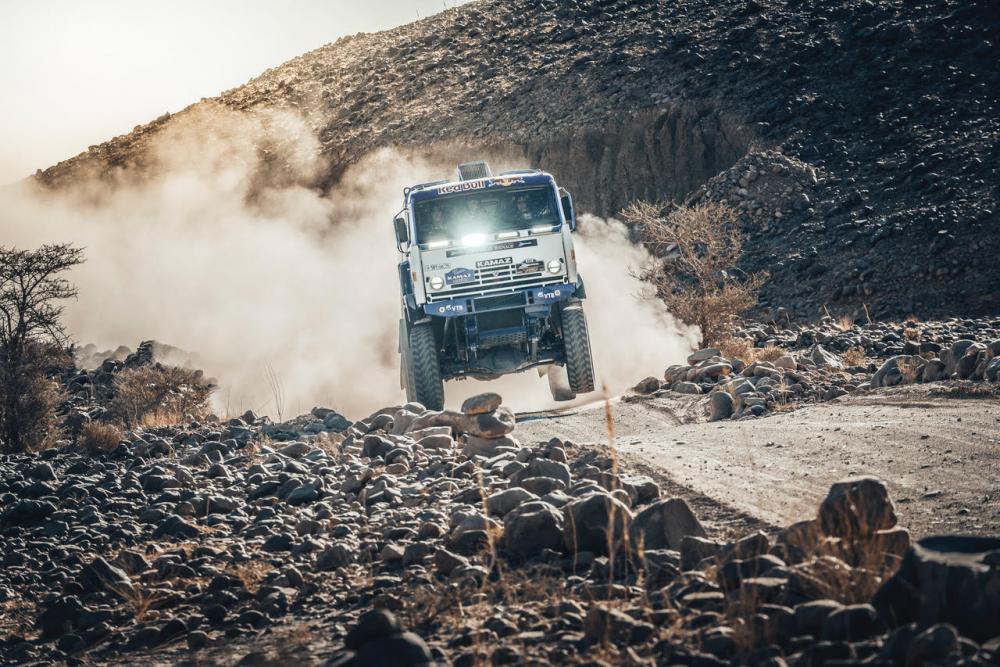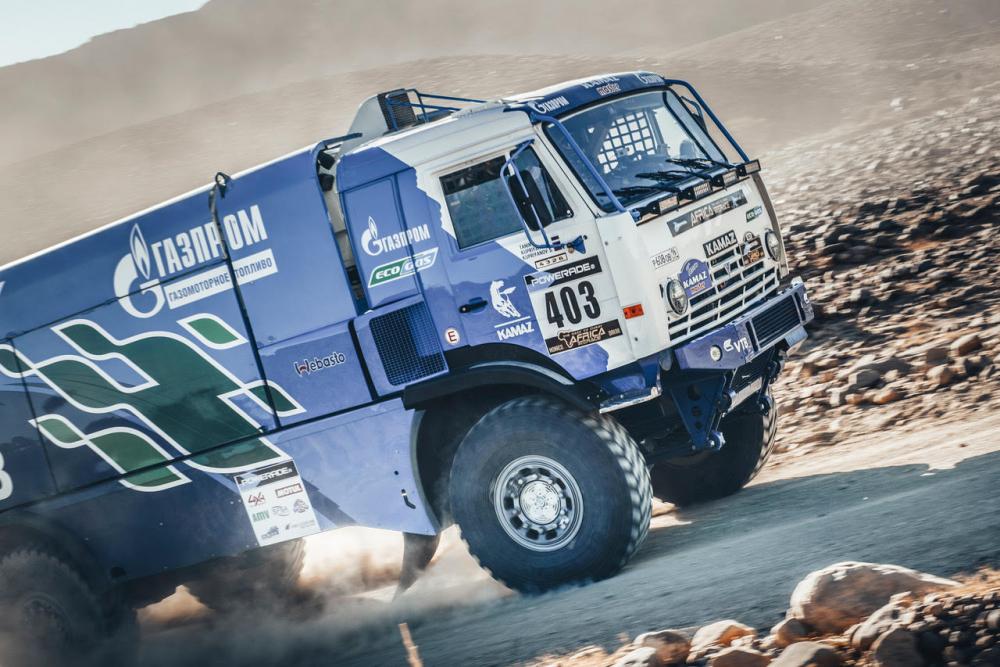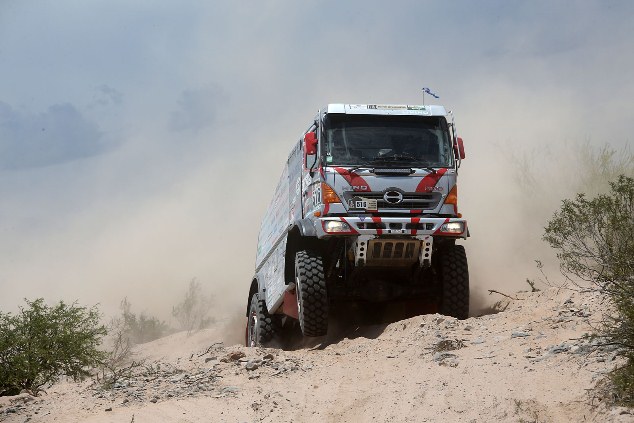
kscarbel2
Moderator-
Posts
18,905 -
Joined
-
Days Won
114
Content Type
Profiles
Forums
Gallery
Events
Blogs
BMT Wiki
Collections
Store
Everything posted by kscarbel2
-
2018 Ford F-150 features new engine line-up, with all-new 3L diesel
kscarbel2 replied to kscarbel2's topic in Odds and Ends
Ford adds diesel, new V-6 to enhance F-150 mpg for '18 Automotive News / January 8, 2017 Engine is part of pickup's major midcycle freshening Ford Motor Co. is adding its first-ever diesel variant and a new V-6 engine to the freshened F-150 pickup for 2018 to further boost the fuel efficiency of its top-selling and most profitable product line. The midcycle freshening includes a new 3.0-liter Power Stroke diesel option available in 2018, along with other engine improvements, seven new front grilles, six new wheel styles, updated lights and interior tweaks. They are the biggest changes to the truck since it was radically retooled for the 2015 model year with an all-aluminum body. U.S. sales of the F series rose 5.2 percent to 820,799 last year, making it the nation’s top-selling truck for 40 consecutive years and most-popular light vehicle for 35 straight years. The growth in F-series sales last year easily outpaced the full-size pickup segment’s 2.7 percent increase. Ford's "A" game “This is their A game in terms of what they believe will keep the sales streak going,” said Dave Sullivan, manager of product analysis at AutoPacific. The updated engines should help improve the truck’s fuel-economy ratings, which haven’t beat Fiat Chrysler’s segment-leading Ram, even after Ford’s lightweighting efforts. The most recent F-150 with a 2.7-liter EcoBoost engine gets 19 mpg city, 26 mpg highway and 22 mpg combined, trailing the Ram 1500 diesel engine’s 21 mpg city, 29 mpg highway and 24 mpg combined rating. “Aluminum was only half the fuel-efficiency equation,” Sullivan said. “They’re now bringing the second half -- the powertrain -- to the equation.” The 2018 pickup is scheduled to be unveiled later Sunday. The optional diesel motor will be the first offered on the truck since it went on sale in 1975. “We’re continually innovating for our customers,” said Todd Eckert, group marketing manager for the F-150. “It’s a leader continuing to lead.” The biggest change, the diesel engine option, aims to appeal to truck customers who tow and haul more than usual. The 3.0-liter will be a variant of the Lion diesel engine that Ford builds for use in Land Rover and Jaguar vehicles. It will be produced in England. Ford did not disclose the vehicle's anticipated mpg. It also isn't saying what F-150 trim levels the diesel engine will be available on, and declined to offer volume projections. Ford offers diesels on its heavy-duty trucks and Transit vans. Different from the Lion engine, they include a 6.7-liter Power Stroke built in Mexico. The addition of the diesel motor is a nod to Ford’s competitors, including the Ram, Chevrolet Colorado and Nissan Titan, among others, which have added diesel variants. Analysts say it will also address the one weak spot in Ford’s EcoBoost engine: the loss of fuel economy when the truck hauls a heavy load. “I have no doubt when you combine a lightweight body, 10-speed automatic transmission, and a 3-liter diesel V-6, there’s definitely the possibility of tying or being the most fuel-efficient half-ton, and I wouldn’t rule out it becoming the most fuel-efficient pickup,” Sullivan said. Gasoline engine changes Ford is also making additions and improvements to the F-150’s gasoline engine lineup. The 2018 F-150 will feature a new entry-level 3.3-liter V-6 with a six-speed transmission. Ford is also updating its 2.7-liter EcoBoost, 3.5-liter EcoBoost and 5.0-liter V-8 engines, and is pairing the truck’s 10-speed automatic transmission with all three. Since its release late in 2016, the 10-speed has been available only on the 3.5-liter. Stop-start technology will come standard on all Ford engines. “We have a more expanded and capable powertrain,” said Peter Dowding, chief engineer for powertrain gasoline systems. “There are some pretty significant changes. … We’re chasing after every piece of fuel economy we can get.” The biggest cosmetic changes come in the F-150’s front end. In an effort to differentiate each of its seven trim levels, Ford is introducing seven new grilles, dropping the traditional tribar design. Super Duty style Many trims of the freshened F-150 will feature a design similar to the Super Duty pickup. Other examples include mesh grilles for trucks with sport appearance packages and body-color grilles for the Lariat Sport trim. The truck also features updated headlights, which maintain the C-clamp style that debuted on the 2015 F-150. The rear taillights and tailgates are also new. For the first time in an F-150, Ford will include precollision assist with pedestrian detection and adaptive cruise control with stop-and-go technology. Both features have been available on other Ford vehicles. The 2018 F-150 will be the first Ford to include a B&O Play sound system, and will have a Wi-Fi hot spot, a new feature for a number of 2018 Ford vehicles, the automaker announced last week at the CES technology expo in Las Vegas. The truck will hit showrooms this fall, but the diesel engines won’t go on sale until summer 2018. Ford declined to discuss pricing, although the base 2017 F-150 starts around $26,000, and the highest trim level starts at around $59,000. . -
2018 Ford F-150 features new engine line-up, with all-new 3L diesel
kscarbel2 replied to kscarbel2's topic in Odds and Ends
. -
Green Car Congress / January 8, 2017 Three years after first introducing the high-strength, military-grade, aluminum-alloy-bodied Ford F-150, Ford is presenting the new 2018 F-150. The best-selling pick-up features new front and rear styling, advanced driver assistance technologies—including available Pre-Collision Assist with Pedestrian Detection—and improved engines. The new engines include an all-new 3.0-liter Power Stroke V6 turbo diesel and enhanced V6 and V8 gasoline engines. Ford is previewing the new truck on Sunday during the FOX NFL Wildcard Pregame Show and will reveal it on Monday at the North American International Auto Show in Detroit. The new F-150 introduces an all-new, standard 3.3-liter V6 engine, with direct-injection for increased efficiency. The 3.3-liter V6 is expected to offer the same 282 horsepower and 253 lb-ft of torque as the previous model’s standard 3.5-liter V6. An all-new second-generation 2.7-liter EcoBoost engine features advanced dual port and direct injection technology, reduced internal friction and improved robustness—all for improved levels of output, efficiency, quality and durability. Like the 3.5-liter EcoBoost, the 2.7-liter EcoBoost will be paired to the segment-exclusive 10-speed automatic transmission for 2018. The 5.0-liter V8 also sees improvements in 2018, as the naturally aspirated engine features significant upgrades for increased power and torque. It’s also paired with the 10-speed automatic transmission for the first time. The 2018 F-150 also adds an available all-new 3.0-liter Power Stroke diesel engine, designed, engineered and tested in-house and paired with the 10-speed automatic transmission. It’s the first diesel engine offered for F-150. In addition to the segment-first 10-speed automatic, the Ford F-150 is now the first full-size pickup truck to add automatic start/stop as standard equipment across all models and engines. The new enhanced segment-first available adaptive cruise control with stop-and-go functionality allows drivers to set a cruising speed. They then use radar and camera technology to monitor traffic ahead to maintain a set distance between vehicles—even following a vehicle down to a complete stop. New, segment-first available Pre-Collision Assist with Pedestrian Detection helps the driver avoid or mitigate collisions with vehicles and pedestrians. With a new available embedded 4G LTE modem for a Wi-Fi hot spot, customers can connect up to 10 mobile devices at one time, virtually anywhere. These technologies join existing segment-exclusive driver assist and convenience features that include: · Available SYNC and SYNC 3 with FordPass enables compatibility of Apple CarPlay and Android Auto – plus mobility services to help customers move more efficiently · Available 360-degree camera technology helps improve driver confidence when parking and can help reduce stress when connecting a trailer—allowing customers to see more so they can focus on specific tasks such as lining up a hitch. · Available lane-keeping system is designed to help reduce unintentional drifting of the vehicle outside the intended lane. · Available Blind Spot Information System with trailer tow technology is optimized for F-150 to include the length of a trailer up to 33 feet; BLIS® uses radar sensors in the taillamps to monitor areas that may not be visible to the driver. The new 2018 F-150 goes on sale this fall. It will be built at Dearborn Truck Plant in Dearborn, Michigan, and Kansas City Assembly Plant in Claycomo, Missouri.
-
I always felt that the 6th generation (1973-1979) and the 9th generation (1992-1997) were the best. (https://en.wikipedia.org/wiki/Ford_F-Series) Today's bloated and overpriced F-Series doesn't appeal to me like the earlier ones. I did like the 10th generation light duty F-250 (7700 GVW / 1997-1999). It was nice to get the extra payload without having to buy an F-250 Super-Duty.
-
a.k.a. "Monkey Wards"
-
Absolutely beautiful truck. Life doesn't get much better than driving a Trident.
-
"Having a good relationship with Russia is a good thing, not a bad thing. Only "stupid" people, or fools, would think that it is bad! We have enough problems around the world without yet another one. When I am President, Russia will respect us far more than they do now and both countries will, perhaps, work together to solve some of the many great and pressing problems and issues of the WORLD!" — Donald J. Trump (@realDonaldTrump) January 7, 2017
-
Titan to be Discontinued
kscarbel2 replied to Mackpro's topic in Modern Mack Truck General Discussion
From a business prospective, why even bother marketing a Volvo with a Mack grille in a country market where Volvo brand trucks are already sold? In this day and age, manufacturers want to do away with product "overlap". Even GMC and Chevrolet light trucks have more visible differentiation than what we see here. Though they keep it out of the news, the company is in dire financial straights. Having sold everything possible*, and cut everywhere possible, it's ability to survive depends on the market. * Volvo Construction Equipment (VCE) isn't currently saleable owing to its depressed market value. At any rate, American truck operators will soon be seeing the new Mack-badged Volvo in person. -
I don't know when Danaher's Apex Tool Group began producing Craftsman, but production shifted overseas in 2010. That said, Danaher sold Apex to Bain Capital in 2012. Apex's brands include K-D Tool, GearWrench, and Jacob's drill chucks. Danaher also had Matco, but not under the Apex subsidiary, and spun it off in 2016 along with Jacobs Vehicle Systems and Gilbarco Veeder-Root into a new business called Fortive.
-
Prime Mover Magazine / January 5, 2017 After three years of collating quarterly registration data, the Australian Road Transport Suppliers’ Association (ARTSA) has now issued the industry’s first long-term analysis of key heavy vehicle market dynamics. “With twelve quarters worth of data available*, we can now identify longer-term trends that may have gone unnoticed by looking at quarterly results alone,” said ARTSA CEO, Robert Perkins, who summarised the last three calendar years of data exclusively for CRTNews. “Looking at the period between 2014 and 2016, what we see is a year-on-year reduction across the heavy trailer and heavy prime mover categories, and a small, yet positive improvement in both medium and heavy rigid truck new registrations,” he explained. “This year-on-year reduction in total new registrations has been a noticeable trend in previous quarterly reports, too, but with three years of full data, both the trend and its magnitude … become much clearer.” Perkins said Australia has thus developed a distinct “two-speed market”, where declines in the trailer and prime mover segments are faced with slow but steady growth in the heavy and medium-duty rigid category. “Overall, total vehicle registrations have gone down around 9.5 per cent,” he explained. “The trailer segment has been leading this trend with a drop of 23 per cent between 2014 and 2016. Prime movers followed with a 15.5 per cent reduction across the two years. “Meanwhile, both medium and heavy rigid vehicles recorded gains of seven and three per cent, respectively, across the same period.” Perkins pointed out that the trend was merely a historical observation and that future developments may follow a different pattern. “However, it has become clear that the market is shifting towards more versatile equipment for urban use – arguably because the urban freight task is growing faster than the line-haul equivalent. “While we can’t predict the future, it seems obvious that new logistical challenges and urbanisation are changing the very fabric of the heavy vehicle market as we know it.” *ARTSA registration data is based on information supplied by the National Exchange of Vehicle and Driver Information System (NEVDIS). .
-
Stage 3 Results MAZ Trucks Press Release / January 5, 2017 All three crews of "MAZ-SPORTauto" team have finished the third stage of the rally-race Dakar-2017 and came into the TOP 20. Siarhei Viazovich's crew no. 511 finished in the 4th place. Now they occupy the 4th position in the general ranking. Alexander Vasilevski's crew no. 522 finished in 15th place and is at 11th position in the general ranking. Alexey Vishneuski's crew no.533 finished in 18th place and is at 14th position in the general ranking. Dakar's participants will cross the Bolivia's border and go up the mountains in the fourth stage between Salvador-de-Jujuy and Tupiza. The maximum height is up to 4000 m. above sea level. Aggravate the situation by the fact that the racers will have to overcome the first dunes in these altitudes. The total length of the stage is 416 km. Starting time of the crews at the third stage: 511 (S.Viazovich / P.Haranin / A.Zhigulin) - 10:56 (16:56 Minsk time) 522 (A.Vasilevski / D.Vikhrenko / A.Zaparoschanka) - 11:12 (17:12 Minsk time) 533 (A.Vishneuski / M.Novikau / A.Neviarovich) - 11:15 (17:15 Minsk time).). .
-
"Dakar 2017": The third stage - the third victory KamAZ Trucks / January 5, 2017 Karginova Crew third consecutive win in the category "Trucks" in the Africa Eco Race. The third stage "Tagunov - Assa", the length of 525 km, 433 km special stage. On Wednesday, January 4, the participants of the rally-marathon Africa Eco Race crossed the equator Mauritanian stages of the race, driving a special stage length of 430 km. In the third stage the first in the standings, "truck" was again the crew Andrew Karginova from the team "KAMAZ-master". "In general, we understand that today's special stage partly repeat yesterday. There was the same piece of dunes, off-road, only a portion of himself was long. We are pre-configured, we tried not to repeat yesterday's mistakes - not to pierce the wheel. And today everything went without a hitch, "- said the pilot. But Sergei Kupriyanov crew continue to pursue failure. If the first day of the race the athletes have lost precious time because of a punctured wheel, today about half an hour they had to spend on repairing the radiator, the failed. "Today we have been quite good sand, but somewhere in this area seems to have collected on the radiator fan, and maybe it broke for other reasons, but whatever it was, we drained coolant. I had to stop to change the fan, radiator mend. In short, it was a lot of work "- summed up the pilot Sergei Kupriyanov. And on the eve of the championship of "Trucks" was for one person less: only woman pilot of the truck on the Africa Eco Race Elizabeth Jacinto from Portugal completed the race early due to engine problems. Czech driver Tomas Tomeček (team Promet / Czechoslovak team) hailed the event as sad, but stressed that during the race can happen anything. "This is Africa, you never know what will happen in the next kilometer. This house we have some confidence here in the race, you can not be sure of anything, "- said Tomeček. On Thursday, January 5, the stage will be held from Assa to Ramsey El-Kebir length of 409 km, and all of which will make special stage. The organizers do not have to change at this stage, because this stage, according to them, is perhaps the most beautiful stage on the rally in Morocco. This is a real gift for pilots, so nice piloting. After the departure from the bivouac of the first stage will be held before the Moroccan town of Msida (Msied) in Tan-Tan Province, the region Guelmim-Es Semara. After that, the town road is very twisty and rocky. Then the path leads into the open carriages with a magnificent panorama. The good news for athletes: after more than 400 km of track will arrive directly to the bivouac. The results of the third phase in the general classification T4 A place participants A country Truck Result 1 Andrew Karginov Andrew Mokeev Dmitri Nikitin Russia Kamaz 4:28:17 2 Tomas Tomeček Ladislav Lala Czech Republic TATRA 00: 42: 23 3 Jaroslav Valtr Czech Republic TATRA 00: 47: 00 4 Miklos Kovacs Peter Chegledi He Tamas Hungary Scania 01: 23: 03 5 Sergei Kupriyanov, Alexander Kupriyanov Anatoly Tanin .
-
Eduard Nikolayev wins the third stage of the rally "Dakar-2017" KamAZ Trucks / January 5, 2017 Press attaché team "KAMAZ-master" Eric Khairullin transfers from Jujuy (Argentina): - Stage "Tucuman - Jujuy" was the first real off-road test for the participants of the rally "Dakar". Special stage in a total length of 199 kilometers consisted of two segments separated by a 300-kilometer area of neutralization. Laid in the foothills of the Andes route was much more interesting than yesterday's, both in terms of piloting, and in terms of navigation. The second part of the race took place at altitudes of over 3,800 meters, surrounded by picturesque mountains and canyons, along the beds of dried up rivers and along the narrow mountain serpentine. Participants could even make out in the mist "tops of" San Martin. With the best time at the finish of the first SU (75-km) was marked by Eduard Nikolaev. Literally in seconds for him to follow Martin Coloma (TATRA) and Tony Genugten (IVECO). With the unexpectedly large backlog finished the first part of the race, Gerard de Rooy (31 minutes, 40 seconds). Already at the bivouac, the Dutch have explained that there were two punctures, due to problems with the paging system had to change wheels twice. Generally, the busiest day was full of adventure for almost all participants. The car Dmitry Sotnikov had a broken rear shock. The track is full of holes. In the words of Eduard Nikolaev, it was "our native Astrakhan, only fesh-fesh added." "There were very dangerous overtaking, miraculously slipped, so as not to offend jeeps, - said Edward after the finish. - The second part went to the highlands. It immediately felt and cars, and people. But this year we have specially prepared engines to the heights, and it is clear that there is an improvement. In addition, the second part of today's route was quite fast and twisty. It helped us to reflow in order to improve weight distribution, for example, we have changed the placement of the spare wheel, it was good for. " Some bad luck haunts crew Airat Mardeeva. Started guys quite well. From the start we toured three trucks, but at some point in the dust flew, and fell into a rut. According to Airat, at this moment the windshield and the whole car is literally covered with dust wave. For safety reasons, in order not to commit collision in conditions of zero visibility, the pilot decided to stop to wait until the dust clears, "I just stopped, not even buried. But the move has failed. I had to pull the truck in tow. Rescued Mathias Berenguer. I thank him very much. 11 minutes, unfortunately, lost. " Then Mardeeva crew got into a bunch of little of jeeps and trucks, sought a navigation point on the 20-kilometer. I had to go around cars stuck. Many nullah had one way out, and he was busy run down truck or jeep. About that same ill-fated checkpoint told us more Robert Amatych, navigator crew Anton Shibalova (№515): «Many are sorted pretty quickly, but managed to make tracks for those who came here later. The WPC - a new kind of control point in the year, which is "open" (signal of its capture is visible on the navigation device of the organizers established in the cockpit before the navigator - ed..) Within a radius of 300 meters. And when you go on the road course, this point is still somewhere in the side, before the arrow indicates the direction of managerial GPS to it. This year, it is not, this is done on purpose to complicate the work of navigators. We lost in this place for 7-10 minutes. " Prior to that, the crew of Anton Shibalova had to change a wheel. It took about another 12 minutes. The first loss in the team Renault. First, at the start I did not come out Gert Huzink. Yesterday, almost before the finish of his truck collided with a sporty SUV. Broken cabin and apparently with steering problems after hitting did not allow him to continue the race today. At the time of sending this press release is not finished, Martin van den Brink on the bonnet Renault Sherpa. Who was riding behind him while Dmitry Sotnikov, suggested that the Dutchman engine problems: "First of silencing billowed black smoke, then it became white. It is obvious problems with the engine or gasket is punched, and the water goes into the cylinders, valve or burned and in which a cylinder is no combustion and unburned diesel fuel is ejected. " rally-marathon organizers of "Dakar-2017" was fined three minutes of Czech rider Martin Coloma acting standings trucks, after the third stage. As a result, Coloma dropped from first to second place in the final standings, and became the leader of the pilot "KAMAZ-master" Eduard Nikolaev. In addition, because of the fine Ton van Genuten dropped to 12th place, and Martin Matsik from 11 th to 16 th, in the end, Anton Shibalov climbed to 10 th place in the standings trucks. At the end of three days of the race, Eduard Nikolaev led the general classification table cargo classification. Dmitry Sotnikov - in the sixth position (00: 11: 12). Anton Shibalov - the tenth (00: 21: 16), Airat Mardeev - fourteen (00: 35: 02). Today, January 5, the riders will be the fourth stage of "San Salvador de Jujuy - Tupisa", a total length of 521 km special stage length - 416 km. According to organizers, about 3,500 meters to reach Dakar "cruising altitude", in which contestants will have to go for six days. The first dunes that appear at this altitude, require crews to show all his skill to overcome them. In co-drivers will not have time to relax, waiting for their frequent change of direction in the Bolivian part of the special stage. The results in the third stage classification T4 A place participants A country Truck Result lag 1 Eduard Nikolaev Evgeny Yakovlev Vladimir Rybakov Russia Kamaz 2:45:51 - 2 Martin Coloma René Kilian David Kilian Czech Republic TATRA 2:49:39 00:03:48 3 Federico Villagra Jorge Perez Andres Memi Argentina IVECO 2:50:24 00:04:33 4 Sergey Vyazovich Paul Garanin Andrew Zhigulin Byelorussia MAZ 2:51:27 00:05:36 5 Hans Stacey Serge Bryuynkens Van der Vaeth Netherlands- Belgium MAN 2:57:29 00:11:38 6 Peter Verslёys Marcel Pronk Arthur Klein Netherlands Netherlands Germany MAN 2:57:41 00:11:50 7 Dmitry Sotnikov Igor Leonov Ruslan Akhmadeev Russia Kamaz 2:58:26 00:12:35 10 Anton Shibalov Robert Amatych Ivan Romanov Russia Kamaz 3:03:02 00:17:11 12 Ton van Genugten Anton van Limpt Der Kinder Netherlands IVECO 3:06:52 00:21:01 13 Airat Mardeev Aydar Belyaev Dm. whistlers Russia Kamaz 3:07:46 00:21:55 15 Ales Loprais Tomanek Strauss Czech Republic TATRA 3:15:46 00:29:55 18 Gerard de Rooy Darek Rodewald Torrallardona Netherlands- Poland- Spain IVECO 3:20:07 00:34:16 Final classification T4 A place participants A country Truck Result lag 1 Eduard Nikolaev Evgeny Yakovlev Vladimir Rybakov Russia Kamaz 5:57:56 00:00:00 2 Martin Coloma René Kilian David Kilian Czech Republic TATRA 6:00:23 00:02:27 3 Federico Villagra Jorge Perez Andres Memi Argentina IVECO 6:02:03 00:04:07 4 Sergey Vyazovich Paul Garanin Andrew Zhigulin Byelorussia MAZ 6:03:03 00:05:07 5 Peter Verslёys Marcel Pronk Arthur Klein Netherlands Netherlands Germany MAN 6:08:43 00:10:47 6 Dmitry Sotnikov Igor Leonov Ruslan Akhmadeev Russia Kamaz 6:09:08 00:11:12 7 Hans Stacey Serge Bryuynkens Van der Vaeth Netherlands- Belgium MAN 6:09:17 00:11:21 10 Anton Shibalov Robert Amatych Ivan Romanov Russia Kamaz 6:19:12 00:21:16 eleven Ales Loprais Tomanek Strauss Czech Republic TATRA 6:28:28 00:30:32 12 Ton van Genugten Anton van Limpt Der Kinder Netherlands IVECO 6:21:16 00:32:18 13 Gerard de Rooy Darek Rodewald Torrallardona Netherlands- Poland- Spain IVECO 6:31:00 00:33:04 14 Airat Mardeev Aydar Belyaev Dm. whistlers Russia Kamaz 6:32:58 00:35:02 .
-
Automotive Business / January 5, 2016 The Brazilian Association of Automotive Vehicle Manufacturers (ANFAVEA) says heavy vehicle sales should return to growth in 2017 after three consecutive years of decline. ANFAVEA expects a 6.4 percent sales increase this year resulting in 65,600 heavy trucks and buses. Brazil saw 61,700 new vehicle registrations in 2016, almost 30% lower than the previous year. "There will be growth because the base is very low," says ANFAVEA vice president, Luiz Carlos de Moraes. The expected sales rise represents about 4,000 to 5,000 units more than 2016: "We are talking about an average of 500 more units for each automaker this year." A key factor is the need of fleets to replace aging trucks: "The reductions that have occurred in recent years have been very drastic; We still have older fleets, there should be a moderate renewal, "Moraes argues. Adding to this is the expectation for the next crop season, also capable of stimulating some market niches. In addition, Moraes cites the signaling of interest rate reductions, which may help in reducing inflation and, consequently, in a gradual improvement in the economic scenario. "The government also signaled infrastructure announcements by the end of the first half. Even if moderately, there will be growth, "he argues. If ANFAVEA is optimistic about 2017, 2016 is a year to forget: truck registrations totaled just 50,500 units, returning to the 1999 level. With a market well below the country’s truck manufacturing capacity, the production of trucks in 2016 was 18.2% below the previous year, closing with 60,600 units. In the bus chassis segment, the scenario was no different: in 2016, with a little more than 11,100 new buses registered, a decline of 33.5 percent. While domestic sales declined, bus chassis exports rose 33.2 percent to 9,700 units. However, production was still 13 percent lower than in 2015, when it totaled 18,700 units.
-
Car 2 Finishes 21st Despite a Tire Flat in the First Off-Road Segment ofthe Year. Car 1 Also Finishes the Stage at 36th in Great Shape. On January 4, Stage3 San Miguel de Tucuman (Argentina) - San Salvador de Jujuy (Argentina) Liaison: 164km, SS(A): 75km, Neutral Zone: 291km, SS(B): 124km, Liaison: 103km Total: 757km The itinerary for Jan. 4 took contestants to the foothills of the Andes in the northeastern part of the country where they raced two SSs with a total SS distance of 199km in the last Argentine stage in the first half of the rally. Upon leaving Tucuman, racers traveled on a 164km liaison route to the start line of the first SS in the foothills of the Andes at an elevation of 1800m. The SS challenged contestants with the first off-road terrain where they drove over wastelands with no roads. Some areas were reminiscent of Africa featuring sandy terrain with grass outcrops and dried river beds. The total SS distance for the Trucks category was 75km shorter than that for other categories (other categories raced for 240km). This also meant that trucks had to travel a longer, 291km, neutral zone from the finish line of the first SS to the start line of the second. In this neutral zone, contestants passed the 4960m point, the highest point of elevation in this year's Dakar Rally. This was followed by the second SS which was 124km long and set in highlands at 3500m+ elevations. After the SS finish line, racers headed down from the mountains on a 103km liaison route before reaching the bivouac at Jujuy which was set up in a parking lot by the side of a national highway. The total distance traveled this day was 757km. The two HINO500 Series trucks fielded by HINO TEAM SUGAWARA continued to deliver stunning performance on the day's course which challenged racers with an amped up level of difficulty. The Teruhito Sugawara and Hiroyuki Sugiura crew piloting Car 2 delivered error-free performance in segments that were particularly challenging for navigators. But later in the day, the truck suffered a flat upon hitting a tree stump, losing about 15 minutes replacing the tire. After this, the truck had a great run to the finish line under high elevation conditions, finishing 21st in the overall trucks category and top in the Under 10-litre Class. This brought the truck's accumulated standings so far to 20th place (preliminary). Car 1 piloted by Yoshimasa Sugawara and Mitsugu Takahashi finished the first SS in 40th place, and finished the day at 36th overall and second place in the Under 10-litre Class. This brought their accumulated standings so far to 34th place (preliminary). The itinerary for Jan. 5 will take contestants across the border into Bolivia where they will be racing a long 416km SS on their way to Tupiza. Teruhito Sugawara: I think we could have finished at a better standing had it not been for the flat. While that is regrettable, the engine felt powerful even under high-altitude conditions so the driving felt really good. I'm excited for the highland stages that are scheduled to begin tomorrow. Hiroyuki Sugiura: In terms of navigation, the fesh-fesh (powdery sand) made it quite challenging to make sure that we passed the waypoints. The flat was frustrating, but things went very well otherwise. Hiroyuki Azuma: Myself and other mechanics worked on the team in July in the Silk Way Rally, so we do have on-site experience, but it is much more hectic to be honest in the Dakar Rally because we have two trucks to service. We'll be facing back-to-back days where it can be difficult to complete our servicing by morning, so we’ll give it our best. Koji Nakamura: Mr. Azuma and myself play a backup role on the team where we would support work on whichever truck is in need of more hands. I've only worked on-site for two days so far and I'm still in the process of getting accustomed physically, so I hope to get up to speed asap. Junya Inoue: As the mechanic in charge of Car 2, I feel a great sense of responsibility as well as some pressure in doing my work. That said, we haven't come across any major problems so far, and I'm doing fine physically. Kenji Kunimoto: I'm in charge of Car 1. We aren't seeing any notable problems with the truck as its specs have been honed and matured. I'm a bit concerned as we head into high-altitude regions, and I've started taking altitude sickness pills. .
-
Dakar 2017: Flat tyres cost De Rooy time but Villagra puts IVECO on the podium in very challenging stage Iveco Trucks Press Release / January 5, 2017 The third stage of the 2017 Dakar Rally proved to be a great challenge in navigation for the crews of all categories. Although their route was shorter than the other classes', Trucks demonstrated their abilities in the ascent to San Salvador de Jujuy on tracks 4,000 metres above sea level. The 199 kilometres of the stage were divided into two sections, where the difficult conditions of the dry riverbeds in the first portion and the great altitude of the second posed the greatest challenge. Gerard de Rooy, PETRONAS De Rooy IVECO Team leader, had issues with his tyres. Already in the first part of the stage, three tyres deflated and he was unable to inflate them quickly due to a failure in the system. This cost the team more than half an hour and, when they arrived to the connecting section, they received two extra tyres from Wuf van Ginkel, who also provides direct assistance to his IVECO teammates. "The system broke down. Because of that three tyres deflated," explained De Rooy. The team swapped two tyres with the spare wheels they had with them, but for the third one, "we had to stop six times to pump it manually. Van Ginkel gaves us two new tyres, so that we were able to continue safely in the second part, with new tyres in reserve." The 2016 champion team lost 34m16s, finishing 33m37s behind the leader, and in 18th position in the overall classification. Ton van Genugten started the day by taking the lead in Waypoint 1 (WP1), but the Dutchman in the IVECO Trakker lost some time in the following points and was penalised with 20 minutes after the stage for having jumped one of the Waypoints. This meant that he lost the third place and fell back to 12th in the stage and in the overall classification. In spite of this, Van Genugten gave the best performance of the PETRONAS De Rooy IVECO team. After assisting Gerard de Rooy, Wuf van Ginkel continued on his way to 10th place, but was also handed a penalty for the same reason as his teammate. In the end he was classified in 16th position and lost his Top 20 position in the combined times. After the penalties and with another Iveco Powerstar, Federico Villagra sealed a neat stage to secure Van Genugten's third position, 4m33s behind the best time of the stage, securing the provisional third place in the overall classification as well. The 2017 Dakar Rally will cross the border to Bolivia, where competitors will have to cope with the altitude, desert and big temperature variations. Thursday the vehicles will have a 416 kilometre drive at more than 3,000 metres above sea level to reach Tupiza. Stage 3 Results – Dakar 2017 1. Eduard Nikolaev (Kamaz) 2h45m51s 2. Martin Kolomy (Tatra) + 3m48s 3. Federico Villagra (IVECO) + 4m33s 4. Siarhei Viazovich (Maz) + 5m36s 5. Hans Stacey (MAN) + 11m38s ----------- 12. Ton van Genugten (IVECO) + 21m01s 16. Wuf van Ginkel (IVECO) + 33m33s 18. Gerard de Rooy (IVECO) + 34m16s Overall Classification – Dakar 2017 1. Eduard Nikolaev (Kamaz) 5h57m56s 2. Martin Kolomy (Tatra) + 2m27s 3. Federico Villagra (IVECO) + 4m07s 4. Siarhei Viazovich (Maz) + 5m40s 5. Peter Versluis (MAN) + 11m20s ----------- 12. Ton van Genugten (IVECO) + 32m18s 13. Gerard de Rooy (IVECO) + 33m04s 22. Wuf van Ginkel (IVECO) + 1h14m40s
-
DOT Secretary nominee Elaine Chao to testify before Senate, cites infrastructure as key DOT concern Commercial Carrier Journal (CCJ) / January 5, 2017 Elaine Chao, President-elect Donald Trump’s pick to run the U.S. Department of Transportation, will appear before a Senate committee next week as part of the nomination and confirmation process for Trump’s incoming administration. The Senate’s Committee on Commerce, Science and Transportation will hold a nomination hearing Jan. 11 to question Chao prior to voting on her confirmation. Trump named Chao as his pick for Secretary of Transportation in late November. She was Secretary of Labor during the entirety of President George W. Bush’s presidency, 2001-2009. In a questionnaire given to Chao by the Senate ahead of her hearing, Chao says the top priorities for her DOT will be infrastructure repairs and expansions, bridging the disparities between urban and rural transportation and “good stewardship on behalf of the American people.” “This means effective enforcement of safety measures; getting the most benefit from the Department’s expenditures, including strengthening its planning and acquisition practices; and preparing for the future by considering new technologies in our infrastructure,” Chao wrote. The hearing will be held at 10:15 a.m. Eastern time in Room 253 of the Senate’s Russell Building.
-
Outlook: Trucking regulations and the new administration Sean Kilcarr, Fleet Owner / January 5, 2017 As Donald Trump prepares to take the oath of office this month, many motor carriers are rightfully wondering how much change his administration will bring to the trucking industry. On the one hand, Trump’s unvarnished dislike of current trade agreements—the Trans Pacific Partnership (TPP) is all but dead, and he’s publicly called into question sections of the North American Free Trade Agreement (NAFTA)—could potentially harm motor carriers. Much of the domestic freight hauled by trucks comes from trade activity. On the other, a “regulatory rollback” of sorts may be in store for several proposed rules (e.g., the speed limiter mandate) though ones already in place (e.g., electronic logging device requirement) may be left alone. David Kelly, a longtime automotive industry expert who served as acting administrator of the National Highway Traffic Safety Administration (NHTSA) under President George W. Bush and is now president of consulting firm Storm King Strategies, says whatever eventually happens regarding which rules stay and which ones go all boils down to the priorities set by the incoming administration. “Once a new administration comes in, everything that is pending is pulled; they stop working on them,” he explains. “Anytime you have a change in administration, even one with holdovers from a previous administration, you are going to have a change in priorities.” Kelly says advice given to him by Transportation Secretary Norman Mineta bluntly illustrates that maxim. “He used to tell me, ‘At the end of the day, we are all staff,’ even the transportation secretary,” Kelly emphasizes. “Everyone has a higher pecking order; the only one who doesn’t is the president.” However, he adds that even presidential priorities must follow the rules of the regulatory game. And that means a rulemaking can’t become truly “final” until Congress has a chance to review it within 60 days, Kelly says. “When a new president comes in, all pending rulemakings that have not been finalized will be withdrawn pending an internal review,” Kelly explains. “So the date really isn’t Jan. 20—Inauguration Day—when any outstanding rule needs to be finalized. It was actually back on Nov. 20, 2016, when it needed to get published and sent to Congress before the 60-day review; otherwise, it becomes subject to a review by the new administration.” Avery Vise, president of consulting firm TransComply, anticipates that the long-awaited drug and alcohol clearinghouse posted by the Federal Motor Carrier Safety Administration (FMCSA) back in early December should be safe. But others may be at risk, such as the following: ◗ Driver training: “On paper, it looks like everybody agrees because there was a negotiated rulemaking.” However, the American Trucking Assns. (ATA) and the Owner-Operator Independent Drivers Assn. (OOIDA) are on opposite ends of the sprectrum when it comes to training. ATA is behind the published rule that includes performance-based training while OOIDA backs a minimum number of training hours and not based on the number of hours. ◗ Safety fitness determinations: “It’s not so much a partisan issue, as the whole proposal is greatly flawed. It’s not even clear that if Hillary Clinton had won the election that the rule would have proceeded.” ◗ Obstructive sleep apnea: “There are going to be some significant costs to carriers and potentially capacity-draining ramifications. I think we’re certainly going to go slow, and it may be shelved.” ◗ Speed limiters: “It’s somewhat more political than you would’ve expected. Now that it’s been proposed, the rule has become a lot more controversial than it might’ve been a decade ago [when ATA first petitioned for it]. In part, a lot of states have adopted higher speed limits, and putting speed limiters in will create a greater differential. That’s exacerbated by the fact that the proposal doesn’t even pick a speed and was very unclear. It’s particularly controversial in the Western states that have higher speed limits—and they’re very strongly in the Republican column.” ◗ Minimum insurance levels: “This is a proposal that really has died, even within the Obama administration. The trial lawyers are very close to the Democratic Party, and this is something that the community wanted. Higher minimums ultimately would lead to higher settlements and higher contingency fees. I put that as a virtual zero chance of happening.” The twist for trucking in all of this is that almost any list of priorities selected by Trump will impact the industry in some fashion, notes Chris Spear, ATA president and CEO. “When you move 70% of the nation’s domestic freight, there are few issues out there that we are not a part of either directly or indirectly,” he says. “Tax reform, trade, and infrastructure—we have a role to play in all of those issues.” For starters, he noted that the 10- year, $1-trillion infrastructure proposal put on the table by Trump late last year could be a big positive for the industry in a number of ways. “Infrastructure is our industry’s lifeblood. We need good infrastructure, and getting such a package passed is key right out of the gate,” Spear notes. “At least as proposed, that package will likely be tied to tax reform.” Spear says trade is another pivotal issue, as over 76% of NAFTA surface trade is carried by trucks. “Again, we have to help shape whatever trade proposals will look like,” he stresses. It depends When it comes to regulation, though, Spear says “it depends.” “We’re not afraid of regulations; we’re a very heavily regulated industry. But what we want are good, clear regulations that we can comply with without undue burden and a measurable return,” he points out. “Look at the Phase 2 greenhouse gas rules. They will define future efficiency for our industry and offer a measurable return for our investments. This is a win-win for us and the environment. “But where regulations don’t work, we’ll oppose them. For example, we will oppose the speed limiter rule [because] it’s a completely flawed approach.” In the end, he stresses, it “all really comes down to good give-and-take between industry and the regulators.” Todd Spencer, executive vice president of OOIDA, believes there’s been far more take than give in recent years where regulatory oversight of trucking is concerned. And he’s hopeful the changeover in administration might encourage a fresh look at highway safety as a whole. “The regulatory regime has been on steroids for the past few years. Is there a cumulative effect? There sure is,” he explains. “The kind of mind-set in the regulatory/legislative community right now is that more is better. But although there’s been more regulation and more compliance than there’s ever been, crash numbers keep going up, not down. So what the very people making all of these rules should be asking is, ‘What the hell is going on?’” This trend can be illustrated by data found in the Large Truck and Bus Crash Facts 2014 report issued by FMCSA in April of last year. From 1979 to 2009, total fatal crashes involving just large trucks and buses dropped from 6,007 to 3,193, a decline of 46%, or some 2,814 fatal crashes. But from 2009 to 2014—not quite a decade—fatal crashes increased from 3,193 to 3,649, an increase of 12%, or 456 crashes. According to preliminary data released by NHTSA last July, fatalities in crashes involving large trucks also increased by 4% during 2015, with 9 out of 10 regions within the United States reporting increases in traffic deaths for that year. “The [safety] system as it currently exists is missing everything; we’ve never had more regulations or compliance with regulations, yet crashes keep going up,” Spencer says. “At some point, you have to say time out. We have to ask what things are important. Enforcement and safety are not the same things; there’s no connection between more enforcement and fewer crashes.” Deceleration Sandeep Kar, global vice president of mobility for global consulting firm Frost & Sullivan, also believes that a Republican-controlled Congress coupled with Trump’s presidency could mean a deceleration or “de-prioritization” of several regulations focused on trucking. Though hours-of-service regulations have long been unpopular among truckers, especially owner-operators, most industry observers expect them to be left unchanged since the regulatory focus of Trump’s administration in its first several months will likely be on issues concerning trade and immigration. “The ELD mandate, which is scheduled for introduction this year, will usher in a wave of digitization in trucking and also looks to remain unaffected as this mandate had strong Republican backing,” Kar adds. “Repealing it at this late stage seems unlikely.” Looking at it from a broader perspective, he stresses that few industries will face the impact—whether net positive or negative—of a Trump presidency as strongly as trucking, which he says is a “leading indicator of economic activity” and typically feels the effects of economic swings and fluctuations well before many other industries or sectors. “While the effect of the Trump administration’s legislative actions will be experienced primarily by the U.S. commercial vehicle industry, global market participants and markets will have much to note and consider,” Kar explains. “Most presidential transitions include reasonable certainties regarding upcoming policy priorities and changes that enable nations, markets, and industries to prepare for their impact,” he says. “Over the past several decades, proposed policy changes generally have had narrow boundaries. This time it is different, and it is going to be more different for trucking than ever before.” “Trump’s publicly stated stance on lowering corporate taxes will definitely have cascading effects on all aspects of U.S. and global industries.” - Sandeep Kar, global vice president of mobility, Frost & Sullivan “Lower corporate taxes would likely result in businesses considering either establishing or reshoring U.S. operations,” Kar emphasizes. “While on the surface this would appear to be great news for the U.S. trucking industry, it may not be as great for either U.S. or global truck manufacturers and suppliers. Lower corporate taxes will most likely drive service-based businesses to the U.S., which would be of less benefit to freight movement than a move of manufacturing operations.” Trade trends Another concern is that labor costs could spike as lower corporate taxes could drive inflation, resulting in wage hikes that would render the incentive of lower taxes much less effective. Moreover, Kar thinks the U.S. and many other economies are still unstable, with many nations skating dangerously close to recessionary boundaries. Thus, economic and trade policy changes could induce short-term recessionary spasms before a clearer and stable picture emerges, he says. Where trade is concerned, modifications or rejections of trade treaties, such as NAFTA or TPP, could adversely impact U.S. truck OEMs and their suppliers, he believes, as many manufacture and/or source materials from Mexico. But there may be a silver lining from that as well, Kar explains. “Several Asian OEMs in recent years have secured strong positions in light- and medium-duty truck markets, [and] new trade policies could hurt them, forcing more U.S. localization and higher taxation for market access—both of which will favor U.S.-based OEMs,” he notes. There is another positive, however. Expedited infrastructure refurbishment and/or enhancement projects and public-private partnerships focused on improving U.S. highways and freight movement infrastructure could have a net positive impact on freight and vehicle efficiencies, route congestion, and sales of off-highway vehicles if the administration implements many such projects immediately. “[But] this could prove difficult because funding [needs] could trigger higher taxes, and Trump has stated his opposition to increase the deficit to pay for his infrastructure plans,” Kar stresses. He points out that the U.S. leads other markets in developing and commercializing technologies, but he warns that any political policies that stifle innovation in digitization, Big Data analytics, information technologies, or mobile and wireless services could hold back the move into a new era for trucking. “Global freight mobility market fundamentals are slowly but surely being energized, new logistics models are being created, and freight efficiencies are being enhanced by commercial trucking’s digital transformation,” he explains. “All of that will disrupt commercial vehicle industry business models, result in the collapse of arcane and inefficient processes and technologies, and transform an industry that forms the backbone of U.S. and global economic activity,” Kar says.
-
Class 8 Truck Orders to See Expected Increase Heavy Duty Trucking / January 5, 2017 Class 8 truck net orders are projected to realize a significant increase in December, according to industry analysts. FTR had forecasted an increase in the last month of 2016 and based on early numbers, December will see a 10% gain over November. The solid order activity is in line with demand from the last two months, showing an upward trend in the Class 8 market. Month-to-month orders in the fourth quarter were very stable when discounting the higher cancellations in October, according to FTR. Class 8 backlogs are expected to increase significantly in the month as well, which will give the market momentum heading into 2017. “Another decent month that met expectations. Orders have been following stable, traditional, patterns for six months now, which is great news after the large drop-off in 2016,” said Don Ake, FTR vice president of commercial vehicles. “Production was weak in December, but based on the Q4 orders, it should begin a modest recovery in February.” Despite gains, order activity was still 24% below December, according to ACT Research. Net orders were at around 164,000 units for the year, but production was aided by a large backlog at the beginning of 2016. “The most recent economic news has been positive, so freight demand should keep orders propped up for a few more months,” said Ake. “2017 still looks to be a tough year, but now backlogs are growing and that means the worst should be behind us for now.” Medium-duty Class 5-7 orders hit an eight-month high in December, according to preliminary numbers from another analyst, who is projecting 20,600 units for the month. Combining medium- and heavy-duty orders for the year, he expects the full year tally to reach 415,600 units. “As December is historically the second-strongest order month of the year, seasonal adjustment reduces the month’s orders to 19,000 units,” he said. “For all of 2016, medium-duty orders of 228,500 units were a virtual carbon-copy of 2015’s net order intake, giving up 1.1% compared to 2015.”
-
Truck orders stable as 2016 ends Fleet Owner / January 5, 2017 December Class 8 orders were above projections, say analysts, though overall medium-duty demand remained on a downward trend. Class 8 and medium-duty orders made strong showings in December, according to preliminary data analysis, though medium-duty demand overall is declining, noted Michael Baudendistel, vice president with the Stifel Transportation & Logistics Research Group. Yet Baudendistel stressed that, for now at least, Stifel is maintaining its 2017 projections for 230,000 Class 8 and 230,000 Class 5-7 medium-duty units. “Fall order season closed out with December orders which were slightly above expectations, though still supportive of current 2017 production outlooks and not likely to lead to any significant change in estimates, in our view,” he explained in a research note this week. “Overall, we believe total orders for the month [of December] should be viewed as in line with relatively low expectations, with Class 8 slightly outperforming and Class 5-7 slightly underperforming expectations,” Baudendistel pointed out. “[It’s] perhaps encouraging that demand has not deteriorated any further.” Another analysts noted that demand for Class 8 units ended 2016 “on a positive note” with 21,400 units booked in December; the only month in 2016 in which orders rose above 20,000 units. However, year-over-year comparisons were negative, as Class 8 orders are down 24% in December 2016 compared to the same month in 2015. By contrast, medium duty Class 5-7 orders climbed to an eight-month high of 20,600 units back in December, though for all of 2016, medium-duty orders of 228,500 units were “a virtual carbon-copy” of 2015’s net order intake, giving up 1.1% compared to 2015. Stifel’s Baudendistel, though, noted that medium duty orders “have now declined for five consecutive months” and that following weak orders in November last (down 9% compared to November 2015), his firm reduced its 2017 medium-duty production estimate to 230,000 units from 235,000 units. “We are maintaining that forecast for now, though we believe persistent weakness in orders indicates there remains pressure to the downside on our recently-lowered forecast,” he added. That being said, Don Ake, vice president of commercial vehicles at research firm FTR, believes that Class 8 orders in particular “have been following stable, traditional, patterns for six months now,” and based on fourth quarter 2016 order volumes “should begin a modest recovery in February.” He added that the most recent economic news has been positive, so freight demand should keep truck orders propped up for a few more months. “[Though] 2017 still looks to be a tough year, backlogs are [now] growing and that means the worst should be behind us for now,” Ake said.
-
Transport Topics / January 5, 2017 Class 8 orders cleared 21,000 in December, ending the year on a solid but lukewarm note. Orders reached 21,400 units, down 24% year-over-year. In the 2015 period, orders were 28,150. December was the only month in 2016 in which orders rose above 20,000 units. In 10 months of 2015, orders climbed above 20,000, with two months clearing 30,000. Research company FTR pegged preliminary net orders at 21,200, calling the volume very consistent with the order demand of the past two months. Class 8 backlogs should rise significantly in results for December 2016, FTR said. Don Ake, FTR’s vice president of commercial vehicles, called the volume “decent” and said the demand “met expectations.” “Production was weak in December," Ake added, "but based on the Q4 orders, it should begin a modest recovery in February.”
-
Sears Buys Time With Craftsman Brand Sale, Store Closures The Wall Street Journal / January 5, 2017 Cash-strapped retailer will sell its brand of tools to Stanley Black & Decker for about $900 million Struggling retailer Sears Holdings Corp. has bought itself some breathing room through maneuvers that include the sale of its Craftsman brand for $900 million and the closure of 150 additional stores as it grapples with a prolonged sales slump and mounting losses. Sears has suffered through several weak quarters and warned Thursday that same-store sales fell as much as 13% in November and December. Over the past five years, Sears has booked $8.2 billion in cumulative losses. The moves by Sears Holdings this week coupled with the injection of $1 billion in financing from its controlling shareholder and CEO, Edward Lampert, helped shares climb off recent lows and reassured suppliers, who had grown increasingly uneasy over the retailer’s prospects. “Vendors had gotten really spooked,” said Gary Herwitz, a managing director of CoMetrics Partners, which advises companies that supply goods to Sears. “But now it seems that Sears bought themselves another year.” Its shares, which traded above $142 in April 2007 after adjusting for subsequent spinoffs, fell to a low of $8 last week. On Thursday, the stock was up 0.3% to $10.39 as of 4 p.m. trading. Sears has been cutting spending and selling off real estate to fund its operations, but its existing locations continue to struggle as shoppers spend more online and at other chains such as Wal-Mart and Target. Jim Loree, chief executive of Stanley Black & Decker Inc., which is buying Craftsman, acknowledged the risks on a conference call, particularly since 90% of Craftsman’s sales come from Sears-related stores. He said the company structured the deal to minimize its risks by assuming no contractual Sears credit risk and no obligation to supply Sears beyond current levels. The retailer bought Craftsman in 1927 for $500. “Eddie Lampert and his team at Sears Holdings have a compelling vision for the future of Sears, but they also have their share of challenges so there cannot be complete certainty about the future of Sears and what direction it might take,” Mr. Loree said. Sears will receive $525 million when the deal closes, $250 million after three years, plus annual payments over 15 years. Sears also said it would continue to shrink by closing 108 Kmart and 42 Sears stores, including the original Kmart location that opened in Garden City, Mich., in 1962. Over the past decade, Sears has closed, sold or spun off more than 2,000 stores. Lampert, a hedge-fund manager, took control of Kmart out of a bankruptcy proceeding and merged it with Sears, Roebuck & Co. in 2005. But the two retail chains, which had long been hampered by outdated stores and inefficient operations, have continued to languish despite Lampert’s efforts to spend more on technology and introduce services such as buy online, pick up in store. His firm owns more than 50% of the company’s shares and is a large creditor. Lampert said this week many of the stores that Sears will close this year have struggled with their financial performance but the company had kept them open to maintain local jobs and in hopes that they would rebound. The CEO also has been keeping the company afloat in recent years with asset sales and a series of loans. On Wednesday, affiliates of his hedge fund lent Sears $500 million backed by 46 real estate properties. That followed a $500 million secured letter of credit obtained the prior week. More asset sales are in the works. Sears said Thursday that its board has established a special committee to sell real estate with the goal of raising over $1 billion. It also has been exploring strategic options for its Kenmore appliance and DieHard battery brands. But unless Sears’s retail business returns to profitability, Mr. Lampert will run out of assets to sell. “There can be no illusion that there is any way to support a viable retail strategy,” said Mark Cohen, a former CEO of Sears Canada Inc., who left in 2004 over strategic differences and is now a professor at Columbia University. Lampert has long stated that his goal is to return Sears to profitability. At the same time, he has limited investments in physical stores, leaving many Sears and Kmart locations looking outdated. Sears has also been more aggressive than its peers in reducing inventory. According to an analysis by market research firm Haynes & Co., which visited stores in a dozen markets across the country during the week between Christmas and New Year’s, Sears had about 55% of the apparel on the floor that J.C. Penney carried. On the appliance front, Sears stocked double the number of refrigerator, microwave and washer/dryer models as Penney, which returned to the category in 2016. “By reducing our inventory investment and our payables, we have decreased the level of vendor support needed to run our business,” Sears said. Sears’s finance chief, Jason Holler, said last month that the retailer is focusing on big-ticket items, where it does better, while reducing its presence in apparel. Sears spent $348 million to build inventory heading into the recently completed holiday season, compared with more than $1 billion last year. By comparison, Penney, which has half the annual revenue, spent roughly $700 million.
-
The Washington Post / January 5, 2017 Former CIA director R. James Woolsey Jr., a veteran of four presidential administrations and one of the nation’s leading intelligence experts, resigned Thursday from President-elect Donald Trump’s transition team because of growing tensions over Trump’s vision for intelligence agencies. “Effective immediately, Ambassador Woolsey is no longer a Senior Advisor to President-Elect Trump or the Transition. He wishes the President-Elect and his Administration great success in their time in office,” said Jonathan Franks, a spokesman for Woolsey. Woolsey said on Thursday night that he did not want to “fly under false colors” any longer. “I’ve been an adviser and felt that I was making a contribution….. But I’m not really functioning as an adviser anymore. When I’m on the [television] screen, everybody announces that I’m a former CIA director and that I’m a Trump adviser and I’m really not anymore.” Woolsey has been excluded in recent weeks from discussions on intelligence matters with Trump and retired Lt. Gen. Michael Flynn, the incoming White House national security adviser. Woolsey had grown increasingly uncomfortable lending his name and credibility to the transition team without being consulted. Woolsey was taken aback by this week’s reports that Trump is considering revamping the country’s intelligence framework. “Jim is very uncomfortable being considered an adviser in an area where one might consider him an expert when he is not involved in the discussions,” one person close to Woolsey said. “To be called ‘senior adviser’ and your opinion is not sought is something he cannot handle.” Woolsey has been a key player in the national security firmament since the late 1970s, when he served as undersecretary of the Navy in the Jimmy Carter administration. He has held other roles under former presidents Ronald Reagan, George H.W. Bush and Bill Clinton, culminating with the post as director of the CIA between 1993 and 1995. Woolsey has been chafed at Trump’s loose style on Twitter. Woolsey is described as a “very principled” diplomat who takes care to communicate the right message with just the right words. “This is a guy [for whom] commas, periods, etc., all have special meaning,” a person said. Woolsey joined the Trump campaign last September, issuing a statement commending Trump’s plans to grow and modernize the military. “Mr. Trump understands the magnitude of the threats we face,” he said in the statement.
BigMackTrucks.com
BigMackTrucks.com is a support forum for antique, classic and modern Mack Trucks! The forum is owned and maintained by Watt's Truck Center, Inc. an independent, full service Mack dealer. The forums are not affiliated with Mack Trucks, Inc.
Our Vendors and Advertisers
Thank you for your support!


